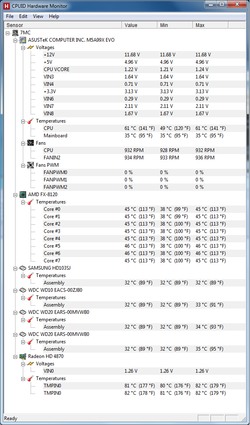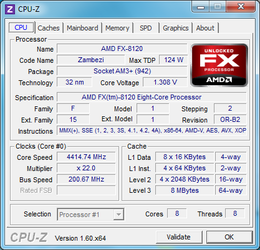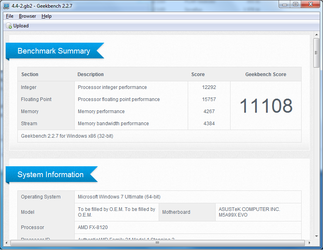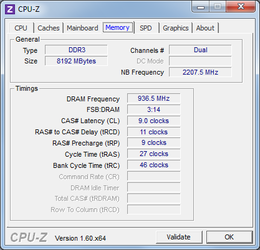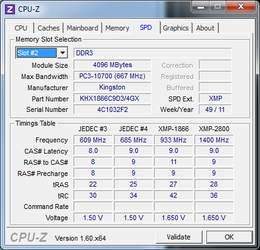Are these temperatures normal for FX-8120. Idle 36 C and in Prime95 blend (8 cores) it gets to 61 C in about 10 minutes, thats when I stopped it. This is on stock speeds, case open, Noctua D-14 with the two fans on ulna adapters and Noctua high grade thermal paste. Temperature readings are from CPU (NOT socket readings, those are about 16 C idle).
I've read alot of conflicting reports about 8120 @ stock speeds, some say they have 23 C idle on air, makes me wonder if mine should be that low or are they reading core idle temps.
I've read alot of conflicting reports about 8120 @ stock speeds, some say they have 23 C idle on air, makes me wonder if mine should be that low or are they reading core idle temps.
Last edited:
